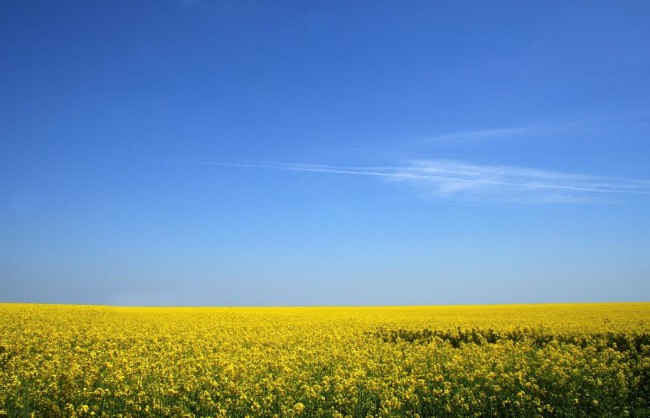
Cultivating Camelina’s Unique Traits Provides More Opportunities to Prairie Producers
Cultivating camelina’s unique traits provides more opportunities to prairie producers
Camelina is an ancient oilseed crop, but relatively new to the Canadian Prairies, grown here since 2008. A member of the Brassica family, Camelina sativa is related to crops like mustard and canola but has unique properties that makes it an attractive crop for prairie producers. Diverse Field Crops Clusters (DFCC) is helping to develop superior camelina cultivars that provide producers with more variety and better opportunities.
Agriculture and Agri-Food Canada (AAFC) scientists Christina Eynck, Mark Smith and Isobel Parkin are working with Smart Earth Camelina Corporation on the development of improved varieties of camelina for the Canadian prairies.
Deb Puttick of Smart Earth says the company is working with AAFC on the development of new germplasm with better agronomics, a molecular breeding platform for camelina and elite winter-type breeding lines, in addition to maintaining its own comprehensive spring and winter camelina breeding programs.
Smart Earth evaluates the advanced lines from Eynck's breeding program in multiple locations across Western Canada. “We expect that the outcome will be new commercial varieties with superior yield, seed size, oil, protein, and disease resistance. Improvements in the agronomics of the crop will be a great benefit to growers and also really help in “selling” the crop to potential growers,” says Puttick.
The crop has several properties that make it attractive to producers, and a unique oil profile that makes it very suitable for food, feed, and industrial applications. Right now, it is being developed for the Canadian producer, particularly for areas with poor quality land where other crops don’t perform well.
Eynck’s research focuses on the development of camelina varieties, while Smith is looking specifically at oil traits and improved oil yield.
“I’m very interested in how plants make oil—and how they make oil with particular fatty acid composition, which determines what you can do with the oil,” Smith says.
Smith is trying to find ways to produce germplasm, or pre-breeding lines, that have a variety of useful oil profiles, focused on plants that are making more omega 3 fatty acids. These are then supplied to Eynck’s breeding program.
Smith is also looking into camelina seeds—specifically why they become sticky when wet. This reaction is caused by the production of mucilage, a long chain carbohydrate. Since this substance can become problematic for seed handling and feed production, Smith is interested in finding lines that have less mucilage.
Parkin is looking upstream at the unique genomic makeup of camelina, focusing on what parts of the camelina genome are responsible for particular characteristics — like seed size, oil content and disease resistance expressed in the crop. This work helps to better inform Eynck’s breeding program.
Camelina has a lot of unique properties that makes it a hardy plant. It is frost and drought tolerant, and has a natural resistance to many diseases, including blackleg and insect pests such as the flea beetle. To enhance camelina’s attractive features, Eynck’s program is working to improve seed yield, oil content, and seed size. She’s also working on the development of winter camelina.
In fact, winter camelina has become one of the most interesting aspects of the project. Winter types are shown to be very frost tolerant and can survive harsh prairie winters. As far as Eynck knows, it is the only winter oilseed crop that producers can grow on the prairies. This can lead to a true winter crop rotation on the prairies.
Eynck says as a breeder, the result of her research ends up in the farmer’s field.
“That is really what makes breeding so rewarding,” she says. “You have that direct connection to the farmer. Best case scenario: the grower is happy with the crop and is able to make a profit from it.”
Written by Erin Matthews
____________________
This DFCC activity is led by Smart Earth with funding from Agriculture and Agri-Food Canada’s Canadian Agricultural Partnership program and Smart Earth Camelina Corporation (Smart Earth).
The Diverse Field Crops Cluster (DFCC) is a unique alliance of industry partners: Canadian Hemp Trade Alliance, Canary Seed Development Commission of Saskatchewan, Saskatchewan Flax Development Commission, Smart Earth Camelina Corporation, Manitoba Crop Alliance, Mustard 21 Canada Inc, and Northern Quinoa Production Corporation. DFCC aligns industry and research stakeholders to seize market opportunities and accelerate the acreage and market returns of special crops. Ag-West Bio leads this five-year research cluster which is funded by Agriculture and Agri-Food Canada’s Canadian Agricultural Partnership program and industry partners.

